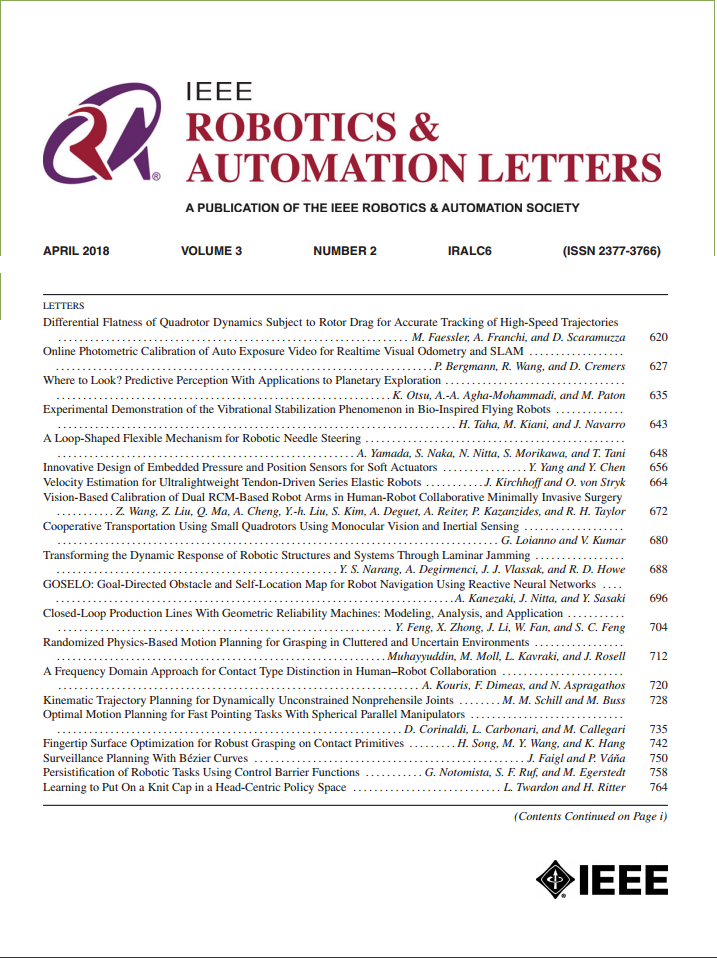Adaptive Neural Computed Torque Control for Robot Joints With Asymmetric Friction Model
IF 4.6
2区 计算机科学
Q2 ROBOTICS
引用次数: 0
Abstract
The nonlinearity and uncertainty of dynamics pose significant challenges to ensuring the tracking performance of joint trajectories, especially time-varying effects on the load and temperature. In this letter, we present an adaptive neural computed torque control scheme to improve the tracking accuracy of the robot joint towards various tasks, which is a novel semiparametric model including a parametric friction model and a nonparametric compensator trained with multiple radial basis function neural networks基于非对称摩擦模型的机器人关节自适应神经计算转矩控制
动力学的非线性和不确定性给关节轨迹的跟踪性能带来了巨大的挑战,特别是对载荷和温度的时变影响。在本文中,我们提出了一种自适应神经计算扭矩控制方案,以提高机器人关节对各种任务的跟踪精度,该方案是一种新的半参数模型,包括参数摩擦模型和由多个径向基函数神经网络训练的非参数补偿器$(\text{MRBFNNs})$。具体来说,非对称模型考虑了速度、载荷和温度相关的摩擦现象。计算出的转矩控制器将滑模方法与所提出的摩擦模型相结合,减少了波动扰动的边界层,实现了全局渐近收敛。为了进一步补偿轨迹跟踪过程中未建模的非线性和参数的实时不确定性,对mrbfnn进行了单独训练。在机器人关节上进行了对比实验,验证了我们的非对称模型在摩擦方面显着提高了与现实的一致性;该控制策略对变载荷关节具有良好的跟踪性能。
本文章由计算机程序翻译,如有差异,请以英文原文为准。
求助全文
约1分钟内获得全文
求助全文
来源期刊

IEEE Robotics and Automation Letters
Computer Science-Computer Science Applications
CiteScore
9.60
自引率
15.40%
发文量
1428
期刊介绍:
The scope of this journal is to publish peer-reviewed articles that provide a timely and concise account of innovative research ideas and application results, reporting significant theoretical findings and application case studies in areas of robotics and automation.
 求助内容:
求助内容: 应助结果提醒方式:
应助结果提醒方式:


